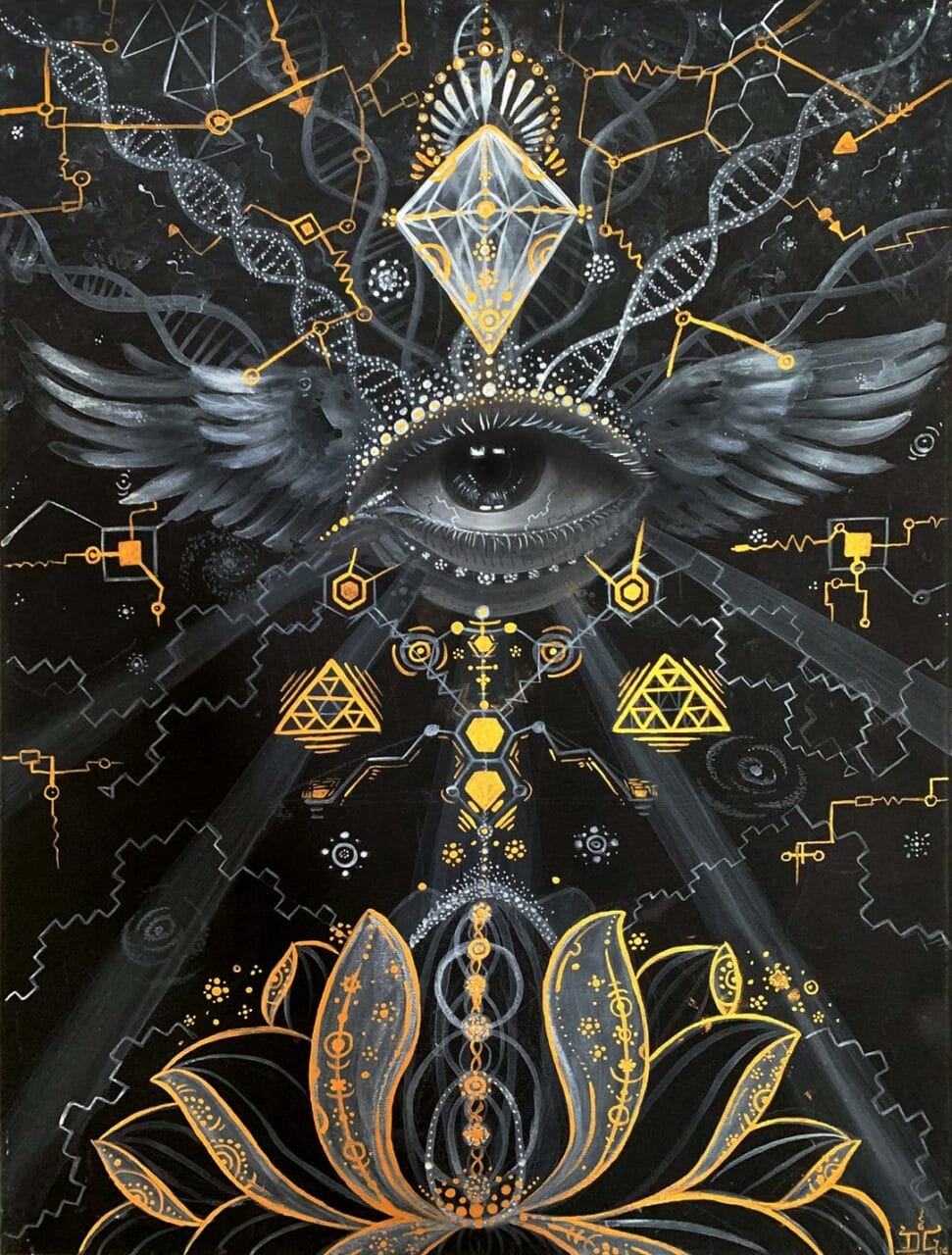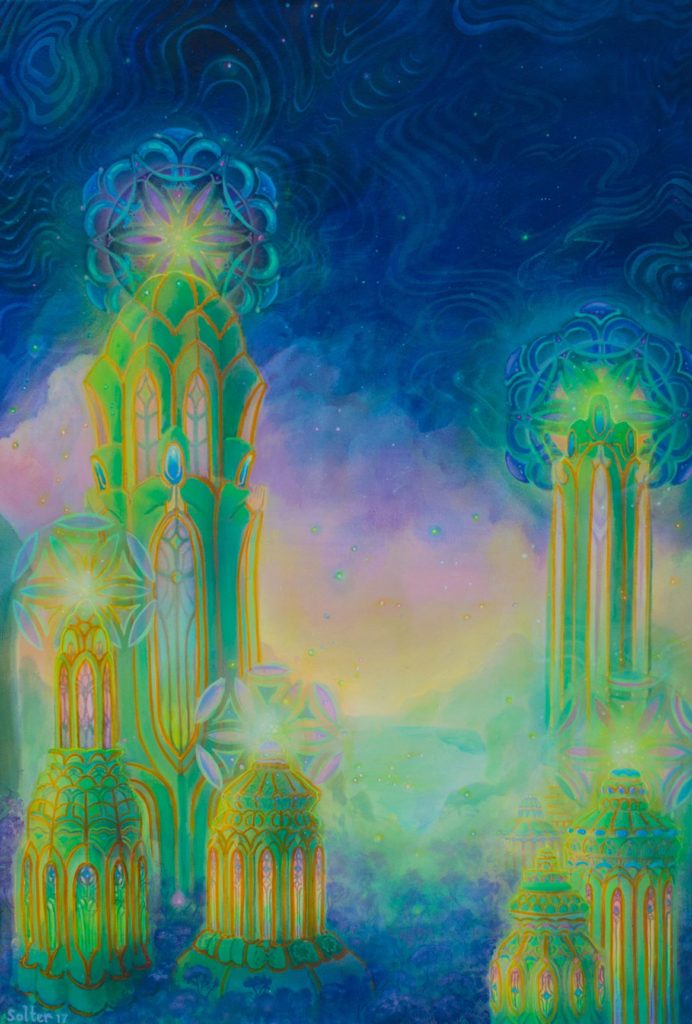
© Uni Kaya
The Historical Journey of Magic Mushrooms
Tracing back to 9000 BC, Magic Mushrooms has a rich history. These unique mushrooms, boasting over 200 species, contain psilocybin that triggers hallucinogenic effects. They can alter perception, cause visual and auditory hallucinations, and induce intense spiritual experiences. For millennia, these mushrooms have been integral to spiritual ceremonies, rituals, and practices in diverse cultures and tribes. Many of these historical instances originate from North and South America.
Magic Mushrooms in Ancient Times
Throughout history, many cultures have used natural hallucinogens. Evidence found in the Sahara Desert suggests that humans were already using Psilocybe Cubensis over 7000 years ago. Archaeological finds reveal depictions of this psychedelic substance in prehistoric art across various regions. For instance, indigenous tribes in the Sahara of North Africa have portrayed its use in their paintings dating back to 9000 BC. Similarly, the renowned Selva Pascuala mural rock painting in Spain, believed to be approximately 6000 years old, suggests the use of Psilocybe Hispanica in religious ceremonies. The influence of these substances on our cultural evolution, religion, art, societal norms, and everyday life is increasingly recognized. These substances have undeniably left a deep mark on our culture and society.
A Historical Overview of the Use of Magic Magic Mushrooms
In history, magic Magic Mushrooms has seen sustained use. The psychoactive substance we know today has endured through various eras, with a multitude of practices surrounding its use. It’s time for Sero Canada to delve into the historical path that led Magic Mushrooms to its current state.
Main Highlights
- Dried Magic Mushrooms have long been used in traditional rituals and spiritual healing. Today, they are used as a treatment for mental health disorders.
- Magic Mushrooms became a symbol of the hippie culture and played a significant role in the psychedelic revolution, promoting its recreational use.
- Key figures like Wasson, Sabina, and McKenna brought psilocybin into the modern world.

© Jonathan Solter
Backing the Stoned Ape Theory
The Stoned Ape Hypothesis was first proposed by Terence McKenna, suggesting that psilocybin might have contributed to human evolution, especially in cognitive development. Although there are critics, the intriguing nature of this theory is undeniable.
Ancient Societies and Sacred Rituals
Ancient civilizations used symbols, artwork, and statues to represent cubes, indicating the ceremonial use of Magic Mushrooms. The Mayans and Aztecs used it for interacting with supernatural beings, including gods. In the culturally rich Aztec society, it was referred to as “teonanácatl“, which means “flesh of the gods”. The concept of a psychedelic experience was foreign to them, leading them to see it as a divine entity. Moving northward to Siberia, hallucinogenic Magic Mushrooms were used by Siberian shamans. They specifically used the hallucinogenic substance (Magic Mushrooms) known as “Amanita Muscaria” for spiritual healing and traditional practices, notwithstanding its toxic nature. This practice dates back approximately ten thousand years. In African tribal rituals, especially those of the Congo and Zimbabwean tribes, cubes were used to communicate with ancestors, induce visions, and facilitate spiritual healing. These ancient societies have significantly shaped the context of contemporary psilocybin use. The reverence for this substance in these cultures arose from its divine connotations and its ability to stimulate mystical experiences.
Magic Mushrooms in Myth and Folklore
Several accounts, including those from Gordon Wasson, have highlighted the connection between Magic Mushrooms and the mystical world, underlining its role in folklore and mythology as a medium for divine communication and enlightenment. In ancient India, the Soma—a ceremonial drink mentioned in the Vedas—was thought to induce altered states of consciousness. Scholars like Wasson speculate that it might have been made from psychoactive plants, specifically fly agaric. Some even suggest that this ancient beverage could have been a mixture of various plants. Regardless of its origin, historical evidence suggests that Soma facilitated the manifestation of sacred symbols during rituals, symbolizing a portal to higher wisdom or spiritual enlightenment.
The Contemporary Era
A Glimpse at the
Beginnings
400;”>Historical accounts from the period before the Columbian era indicate that psilocybin Magic Mushrooms was utilized by civilizations like the Mayans and Aztecs. However, during the 15th and 16th centuries, Spanish authorities considered its usage uncouth and subsequently outlawed it. Despite the ban, shamans continued the clandestine consumption of magical Magic Mushrooms, thereby ensuring the survival of their cultural practices for over four centuries.
The Renaissance in the West
The 1950s witnessed a revival of these substances within Western society, largely credited to the groundbreaking work of R. Gordon Wasson, Roger Heim, and Albert Hofmann. While visiting Mexico, they successfully isolated the two psychedelic compounds, psilocybin and psilocin, from the Magic Mushrooms obtained from the Mazatec tribe. Wasson later disseminated his findings, experiences, and insights regarding magic Magic Mushrooms through Life magazine. His articles and personal narratives facilitated the recognition of the substance as a potent hallucinogen. By the advent of the 1960s, the substance had become emblematic of the Hippie movement and was perceived as a conduit for spiritual experiences. Yet, its use also incited substantial controversy and triggered a seismic shift in the recreational consumption of hallucinogenic substances.
Continued Evolution: Worldwide Prohibition
In 1971, the United Nations Convention on Psychotropic Substances classified psilocybin as a Schedule 1 illegal drug, alongside Lysergic Acid Diethylamide and N, N-Dimethyltryptamine. These substances were collectively considered to lack medicinal value and were believed to have a high likelihood of misuse. This prompted widespread criminalization in Western nations, including Canada and the U.S., severely limiting the spiritual and therapeutic uses of the substance.
The Modern Resurgence of Psilocybin
Today, there has been a reduction in the severe restrictions governing psilocybin use, beginning with its decriminalization. This shift is in line with the UN’s policy allowing member nations to regulate the substance as per their own discretion. Simultaneously, a growing body of research and clinical trials on psychedelics and consciousness strongly affirms the potential medicinal benefits of psilocybin. A 2021 study exploring the therapeutic use of psychedelics posits that the 1970 ban notably hindered further research. However, an initial study conducted in 2004 sparked renewed interest in psilocybin, suggesting its possible use in neuropsychiatry, especially in the treatment of mental health conditions such as:
- Depression, Anxiety, and Stress
- Post-traumatic Stress Disorder (PTSD)
- Obsessive-compulsive Disorder (OCD)
- Drug Addiction (Aiding in Recovery)
- Excessive Alcohol Consumption and Drugs)
The Influence of Media and Art
Conversations about psychedelic cubes have become so prevalent that they’re portrayed across various mediums. The collective intrigue about these substances has been reignited through diverse forms of media, art, and literature. Movies like “Fantastic Fungi” by Director Louie Schwartzberg, and documentaries delving into their therapeutic attributes, have broadened public understanding of their psychological and physical effects. Michael Pollan, the author of “How to Change Your Mind,” has studied the use of psychedelics for mental health and spiritual development, thereby revitalizing interest in their societal and therapeutic relevance.
Prominent Historical Advocates of Fungi
- María Sabina: A Mazatec shaman and poet from Mexico, Sabina was instrumental in introducing cubes to the Western world. She permitted Wasson to observe her Magic Mushrooms rituals.
- Gordon Wasson: Wasson, a writer, garnered international attention for the substance. His in-depth account of his experiences with Sabina contributed to a broader understanding of its local use.
- Terence McKenna: A significant proponent of psychedelics, McKenna was pivotal in emphasizing their cultural and philosophical significance. Through his speeches, writings, and research, McKenna popularized the “Stoned Ape” theory, presenting it as a tool for cognitive advancement that shaped society.
The Journey – A Concise Overview
with TRD.
| Prehistoric | Stone art discovered in the Sahara, Africa, indicates prehistoric use |
| Ancient | The Maya and Aztec civilizations incorporated teonanácatl into their religious and spiritual rites. |
| 16th Century | Usage was discouraged due its association with Indigenous beliefs |
| 18th Century | In 1799, the “intoxicating” effects of the substance came to light when four children inadvertently ingested Psilocybe Semilanceata, highlighting the potential risks of its use. |
| 20th Century | Wasson and Sabina introduced the substance to the Western world, sparking the psychedelic revolution among the hippie movement. The UN legalized the possession and use of the substance. |
| 21st Century | Clinical studies to verify its medicinal potential are increasing. Its use has been authorized by Health Canada through a Special Access Program. |
The Emergence and Future of the Psychedelic Era | Purchase Magic Mushrooms Online from Sero Canada
At Sero Canada, we foresee a heightened global recognition of our routinely used cubes, backed by substantial scientific research. Our online Magic Mushrooms platform at Sero Canada is poised to facilitate this evolution. We offer a wide range of products that pique the interest of customers, inspiring them to embark on the fascinating and healing journey of psilocybin. Secure your preferred items from Zoomies today.
Commonly Asked Questions
No, Amanita Muscaria does not contain the active ingredients found in Psilocybe Cubensis. Instead, its psychoactive constituents are muscimol and ibotenic acid. There’s a prevalent theory suggesting Soma’s origin as a combination of various psychoactive plants, much like ayahuasca, a brew that alters consciousness. The only similarity between the two is the perception of soma as an equivalent of ayahuasca. It came under scrutiny for potential Magic Mushrooms poisoning when it was classified as a toxic Magic Mushrooms. Today, it’s identified as the Psilocybe Mexicana.

